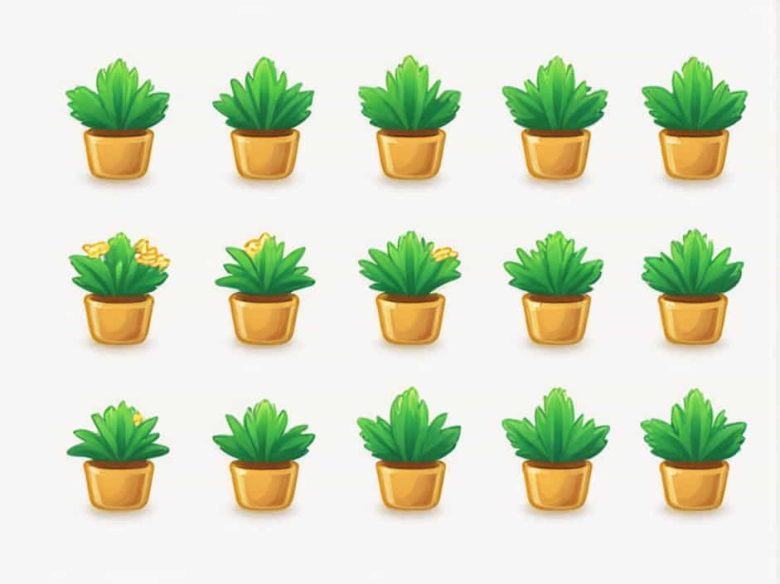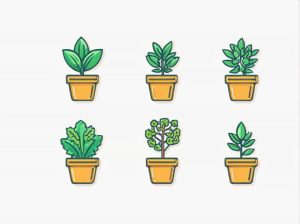The hot desert is one of the most extreme environments on Earth characterized by scorching temperatures minimal rainfall and arid landscapes. Despite these harsh conditions many plants have adapted to survive. These plants are known as xerophytic vegetation.
Xerophytes are plants that have specialized features allowing them to conserve water and withstand prolonged droughts. From cacti in North America to acacia trees in Africa these plants play a crucial role in desert ecosystems.
This topic explores the characteristics adaptations and examples of xerophytic vegetation along with their ecological importance in desert environments.
What is Xerophytic Vegetation?
Xerophytic vegetation refers to plants that can survive in extremely dry conditions. These plants are commonly found in:
- Hot deserts (e.g. the Sahara Mojave and Arabian Deserts)
- Semi-arid regions with low rainfall
- Rocky and sandy landscapes where water retention is difficult
Xerophytes have developed unique adaptations to minimize water loss store moisture and tolerate extreme heat.
Characteristics of Xerophytic Vegetation
To survive in desert conditions xerophytic plants have developed specific characteristics including:
1. Deep Root Systems
- Some xerophytes like mesquite trees have long taproots that reach underground water sources.
- Others like cacti have shallow but widespread roots that quickly absorb moisture from rainfall.
2. Water Storage Capabilities
- Succulents like cacti and agave store water in their thick fleshy stems.
- Some plants have bulbous roots or tubers that retain moisture.
3. Reduced Leaf Surface Area
- Many xerophytes such as cacti have spines instead of leaves to reduce water loss.
- Some plants have rolled or needle-like leaves to minimize transpiration.
4. Waxy or Hairy Coating
- A thick cuticle on leaves prevents moisture from evaporating.
- Some plants have fine hairs that trap humidity and protect against wind-driven water loss.
5. Photosynthesis Adaptations
- Some xerophytes use CAM (Crassulacean Acid Metabolism) photosynthesis where stomata open at night to minimize water loss.
- Others like desert shrubs can slow down metabolism to conserve energy during droughts.
Examples of Xerophytic Vegetation in Hot Deserts
1. Cacti (Cactaceae Family)
Cacti are the most well-known xerophytes found in deserts of North and South America. Their adaptations include:
- Thick water-storing stems
- Spines instead of leaves
- Waxy cuticles to reduce evaporation
- Shallow root systems for rapid water absorption
Common examples: Saguaro cactus (Carnegiea gigantea) Prickly pear (Opuntia) and Barrel cactus (Ferocactus).
2. Acacia Trees (Acacia spp.)
Acacia trees are commonly found in African and Australian deserts. They survive by:
- Deep taproots to reach underground water
- Small waxy leaves that minimize water loss
- Ability to tolerate extreme heat and poor soil conditions
3. Aloe Vera (Aloe barbadensis miller)
Aloe vera is a succulent plant known for its medicinal properties. It thrives in deserts due to:
- Thick fleshy leaves that store water
- A gel-like interior that prevents dehydration
- Minimal leaf openings (stomata) that only function at night
4. Joshua Tree (Yucca brevifolia)
Found in the Mojave Desert the Joshua Tree is a unique xerophyte with:
- Long spiky leaves that reduce transpiration
- Deep root systems for stability and water absorption
- A slow growth rate to conserve energy in harsh conditions
5. Creosote Bush (Larrea tridentata)
A dominant shrub in North American deserts the creosote bush has adapted by:
- Producing resinous leaves that retain moisture
- Releasing chemicals that inhibit the growth of nearby plants to reduce competition
- Withstanding extreme drought by going dormant in dry seasons
How Xerophytic Vegetation Benefits Desert Ecosystems
Xerophytic plants are essential for maintaining desert biodiversity. They provide:
1. Shelter and Habitat
- Many desert animals such as lizards birds and insects rely on xerophytes for protection.
- Cacti and shrubs offer nesting sites and shade.
2. Food Sources
- Plants like prickly pear cacti provide fruit for wildlife.
- Some desert trees like the acacia produce seeds and flowers for herbivores.
3. Soil Stabilization
- Xerophytes help prevent desert erosion by anchoring the soil with their roots.
- They retain moisture in the ground supporting nearby vegetation.
4. Oxygen Production
- Despite their dry habitat desert plants absorb carbon dioxide and release oxygen helping maintain the ecosystem balance.
Threats to Xerophytic Vegetation
Despite their resilience xerophytic plants face several challenges including:
1. Climate Change
- Rising global temperatures and shifting rainfall patterns threaten desert ecosystems.
- Prolonged droughts can exceed the survival limits of some xerophytes.
2. Human Activities
- Deforestation and urban expansion reduce natural desert habitats.
- Overgrazing by livestock damages plant populations.
3. Illegal Plant Trade
- Many succulents and cacti are illegally harvested for the horticulture industry.
- This threatens wild populations and disrupts desert ecosystems.
Conservation Efforts for Xerophytic Vegetation
To protect desert plants conservation efforts include:
1. Protected Areas and National Parks
- Deserts like the Sonoran Desert National Park safeguard native xerophytes.
- Wildlife reserves help prevent overgrazing and deforestation.
2. Sustainable Cultivation
- Encouraging the cultivation of drought-resistant plants in home gardens reduces pressure on wild populations.
- Xeriscaping (water-efficient landscaping) promotes the use of native desert plants.
3. Combatting Climate Change
- Reducing carbon emissions helps stabilize desert ecosystems.
- Water conservation projects ensure sustainable use of desert resources.
Xerophytic vegetation is a remarkable example of nature’s adaptability. Found in hot deserts worldwide these plants have evolved to withstand extreme conditions through water storage deep roots and specialized leaves.
From towering cacti to resilient acacia trees xerophytes play a vital role in desert ecosystems providing shelter food and oxygen. However these plants face threats from climate change habitat destruction and illegal harvesting.
By promoting conservation efforts and sustainable practices we can help preserve these incredible desert survivors for future generations.



